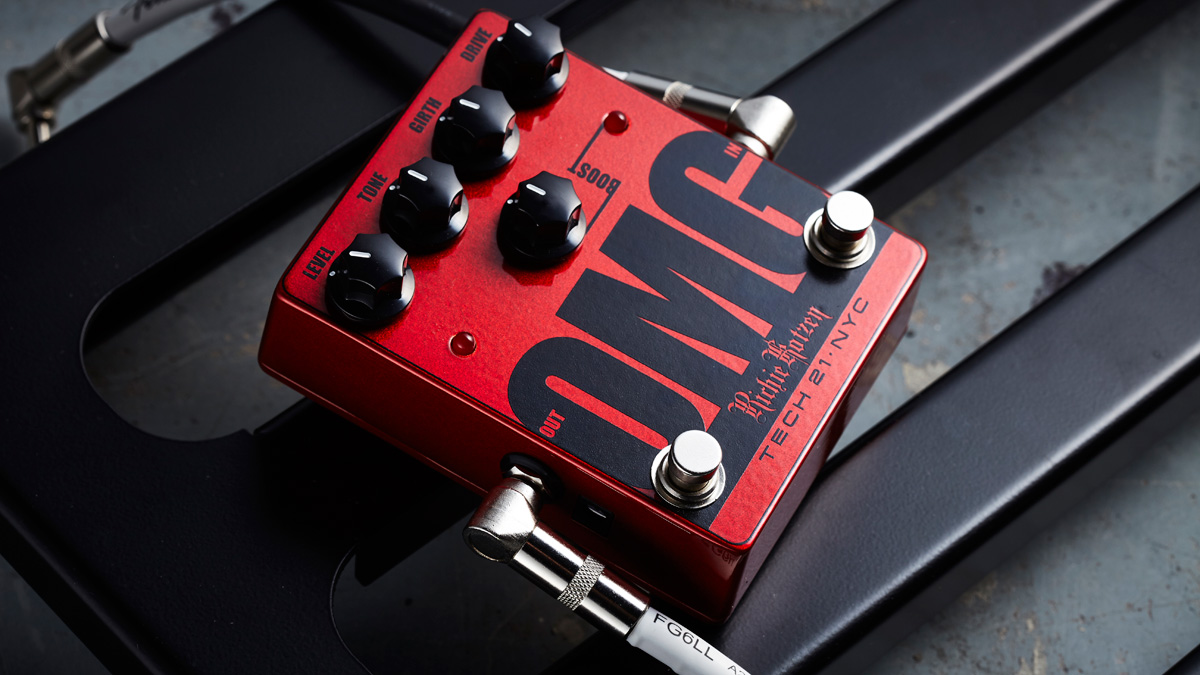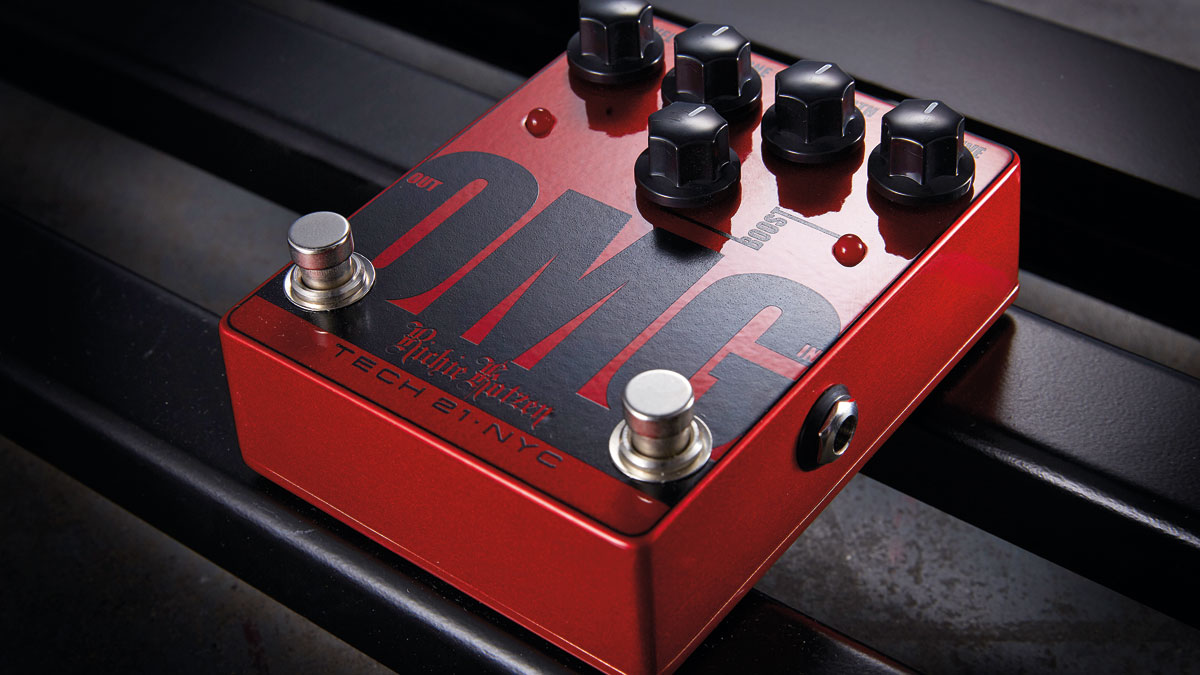MusicRadar Verdict
Richie Kotzen and the Tech 21 designers have come up with a practical if pricy variation on the overdrive/distortion pedal genre.
Pros
- +
Powerful and flexible overdrive and distortion with plenty of tonal variations, plus boost to kick it up when needed.
Cons
- -
Some will regard the asking price as a lot of money for a distortion pedal. Can sound loose and over-compressed.
MusicRadar's got your back

Tech 21 OMG Richie Kotzen Signature Overdrive

Tech 21 OMG Richie Kotzen Signature Overdrive
NYC-based Tech 21 and Richie Kotzen - guitarist, singer, songwriter and producer, formerly of Poison, Mr Big and currently Winery Dogs - have collaborated to come up with the OMG, an all-analogue distortion pedal, which also features in Kotzen's signature version of the Fly Rig 5.
The OMG is a dual-footswitch pedal: the left-hand switch operates the distortion, while the right one brings in up to 28dB of boost, set via a knob. Both footswitches operate independently of each other, so you can just use the pedal as a booster without the distortion, if you wish.
The distortion is controlled by the four knobs in a row at the top of the pedal. Level sets the output level, while the Drive knob sets the overall amount of gain and overdrive. Interestingly, you get two knobs to adjust the EQ. The Tone knob offers a flat setting when fully clockwise, but you can wind it back to tone down the high end; Girth is an active midrange control that offers cut or boost with a null setting at the 12 o'clock point.
Sounds
Disregarding the distortion section for a minute, and engaging just the boost switch, the OMG yields great results as a pure boost pedal - there's plenty there from just minimal volume hikes to getting your valves really cooking.
The pedal was designed to replicate the distortion flavour of a single-power-tube Class A amplifier and kicking in the distortion section yields some natural valve-like overdrive at quite low drive knob settings. With the boost footswitch available to take that up a notch, there's versatility right there in adding a driven extra channel to your amp with two levels of gain, although the higher gain settings can sound a little blown-out or lacking in focus.
All the same, you can access some really saturated and sustaining tones that will suit players on the heavier side of the rock spectrum, especially lead players who like to squeeze out harmonics. The EQ knobs do a great job of matching the sound to complement your amp, with Girth putting some bark or weight in the tone or alternatively dialling in a bit of a scoop.
Trevor Curwen has played guitar for several decades – he's also mimed it on the UK's Top of the Pops. Much of his working life, though, has been spent behind the mixing desk, during which time he has built up a solid collection of the guitars, amps and pedals needed to cover just about any studio session. He writes pedal reviews for Guitarist and has contributed to Total Guitar, MusicRadar and Future Music among others.
““We were arguing a lot and we were miserable”: How Green Day exceeded expectations with their most ambitious song
"There’s plenty for us guitarists to learn – and ‘less is more’ is the overriding lesson": how to play like George Harrison on The Beatles' Abbey Road
“They didn’t like Prince’s bikini underwear”: Prince’s support sets for the The Rolling Stones in 1981 are remembered as disastrous, but guitarist Dez Dickerson says that the the crowd reaction wasn’t as bad as people think










